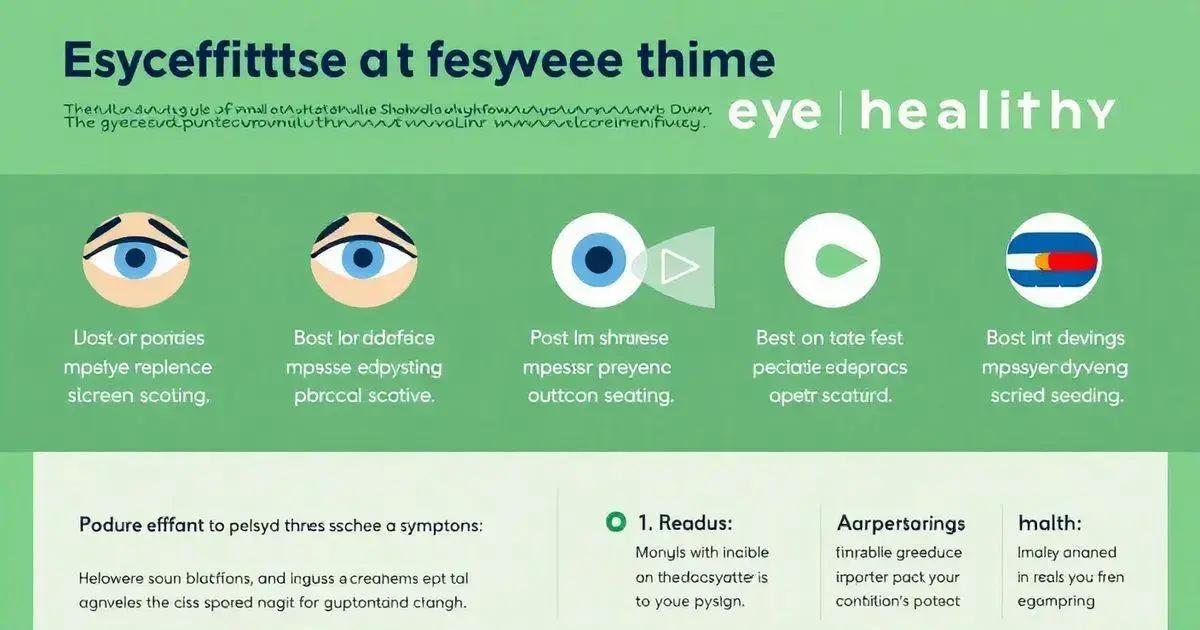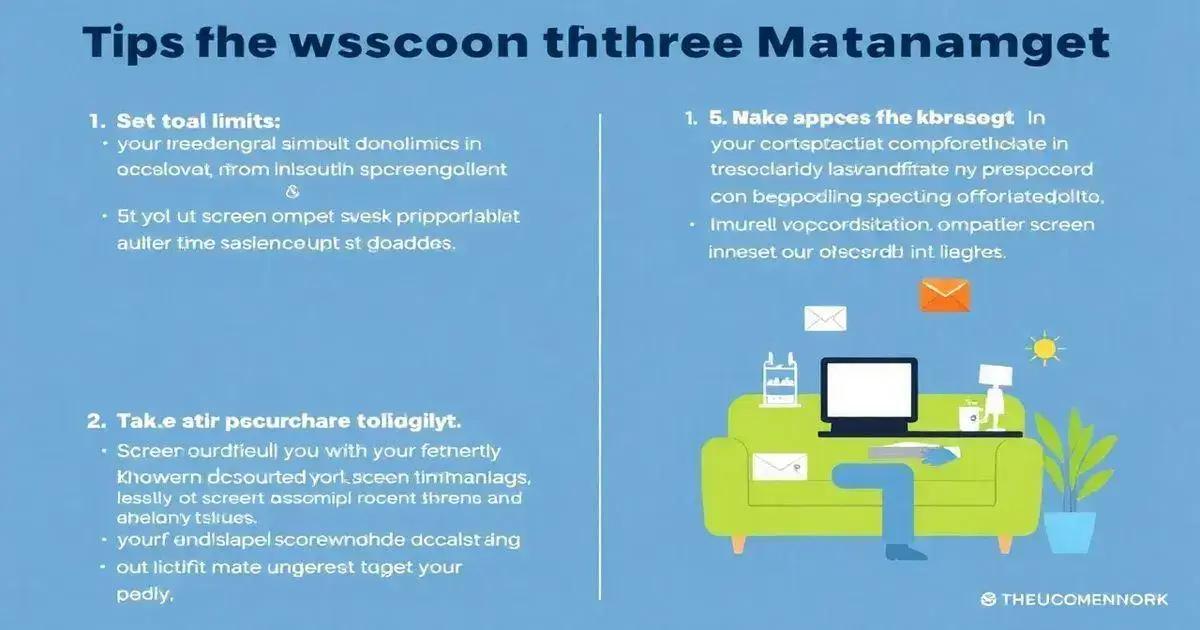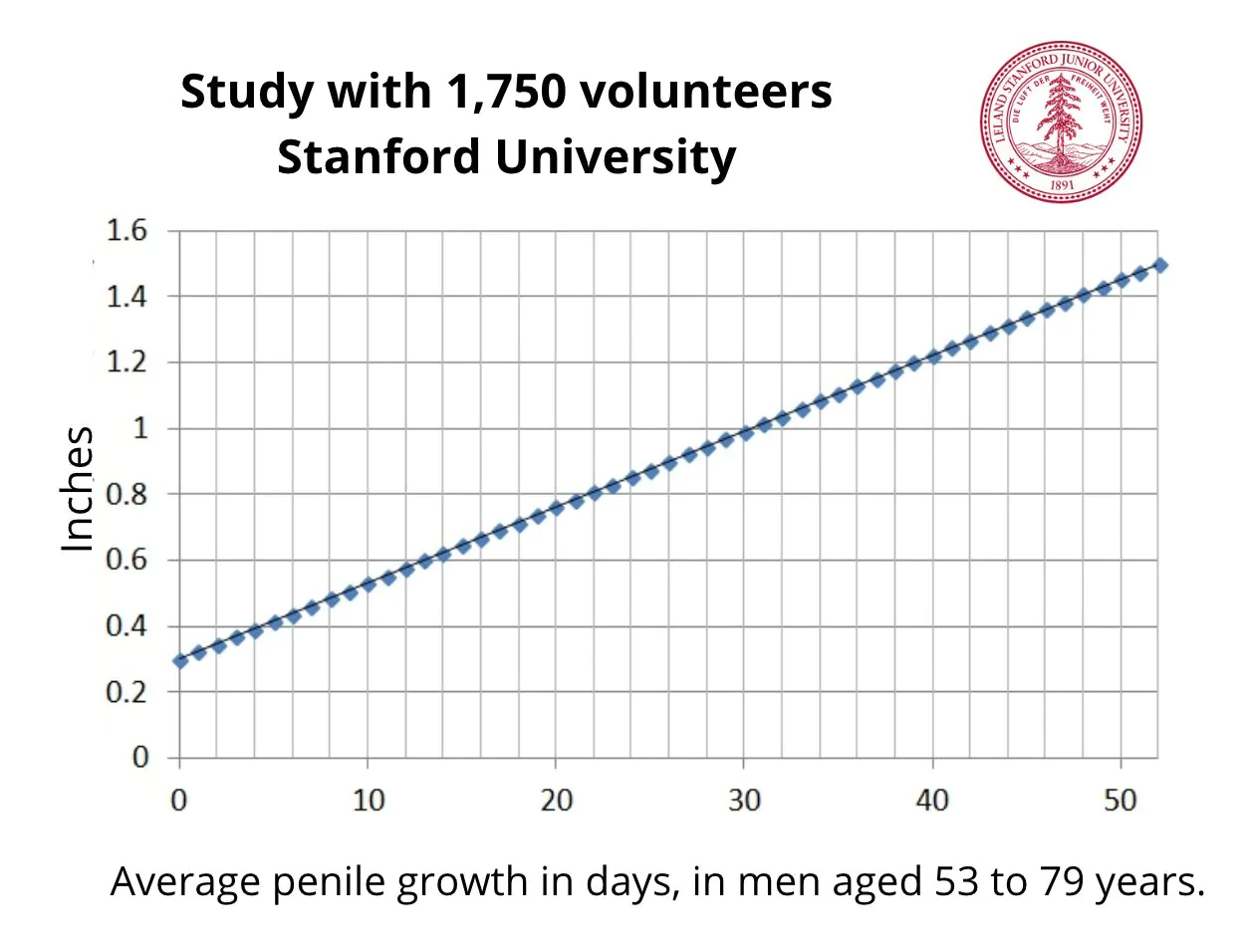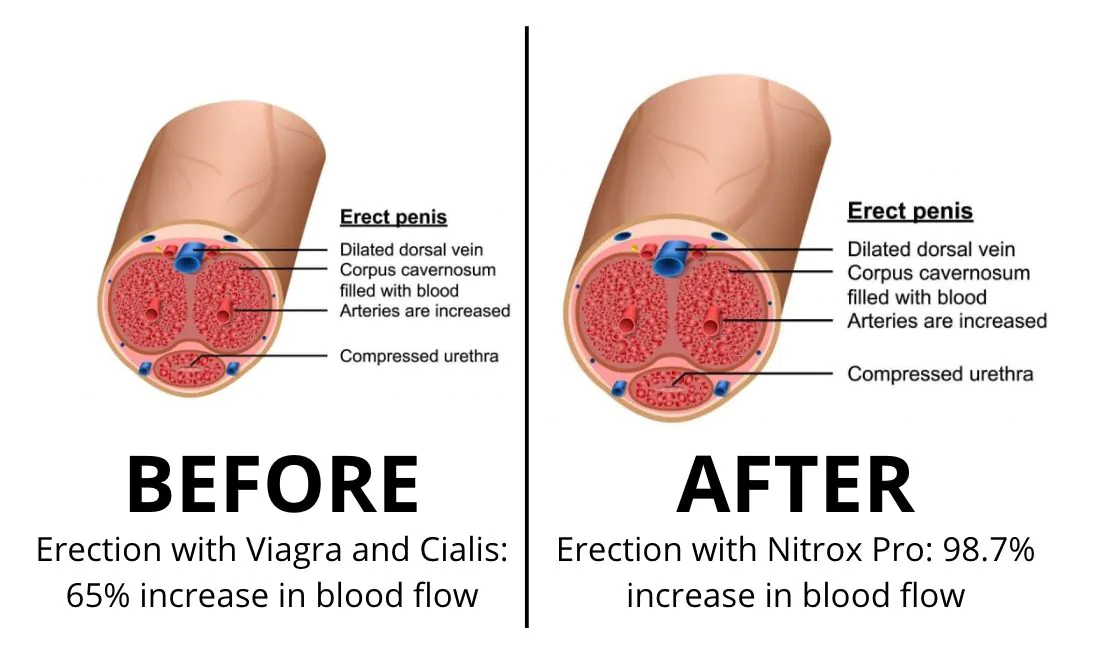Managing screen time effectively is essential to protect eye health. Techniques like the 20-20-20 rule, regular breaks, eye exercises, and maintaining a balanced lifestyle can help reduce digital eye strain and promote overall eye wellness.
In today’s digital age, managing screen time is crucial to protect eye health. Prolonged exposure to screens can lead to discomfort and strain, affecting our overall vision. In this article, we’ll dive into effective strategies on how to manage screen time, ensuring healthier eyes. We will discuss the impact of excessive screen time, practical tips for reduction, eye exercises you can easily do, and the necessity of regular breaks. Your eyes deserve care, and with these insights, you’ll be equipped to provide it.
Understanding the Impact of Screen Time on Eye Health

Screen time refers to the amount of time spent using devices with screens, such as computers, tablets, and smartphones. It’s important to understand how this impacts eye health. Excessive screen time has been linked to a condition known as digital eye strain, which can cause discomfort and vision problems.
What is Digital Eye Strain?
Digital eye strain occurs when our eyes become fatigued from staring at screens for prolonged periods. Common symptoms include dryness, irritation, blurred vision, and headaches. This happens because, during screen use, we tend to blink less often, which can lead to dryness and discomfort.
The Role of Blue Light
Moreover, screens emit blue light which can affect our eyes. Exposure to blue light can disrupt sleep patterns and lead to further discomfort. While more research is needed, it’s wise to take precautions when spending long hours in front of devices.
How Screen Time Affects Children
Children are particularly susceptible to the effects of screen time. Their eyes are still developing, and excessive screen exposure can result in serious problems like nearsightedness. It’s crucial for parents to monitor their children’s screen time and encourage regular breaks.
Understanding Recommendations
Experts suggest following the 20-20-20 rule: every 20 minutes, take a 20-second break and look at something 20 feet away. This simple practice can significantly reduce eye strain and promote better eye health.
Tips for Effective Screen Time Management

Managing screen time effectively is vital for maintaining eye health. Here are several tips to help you limit your screen exposure while ensuring productivity and comfort.
Set Clear Limits
Establish specific time limits for your screen use each day. By creating a daily schedule, you can allocate time for work, leisure, and necessary breaks. Consider using apps that track and limit your screen time to help stay on target.
Utilize Breaks Wisely
Incorporate regular breaks into your routine. Try the 20-20-20 rule: every 20 minutes, look at something 20 feet away for 20 seconds. This simple activity allows your eyes to relax and recover.
Create a Comfortable Environment
Ensure your workspace is ergonomically friendly. Adjust chair height, screen brightness, and the distance of your screen to reduce strain on your eyes. Use adequate lighting to minimize glare from screens.
Engage in Non-Screen Activities
Plan time for activities that do not use screens, such as reading, walking, or engaging in hobbies. This can provide a much-needed break for your eyes and refresh your mind. Aim for a balanced lifestyle that promotes overall well-being.
Recommended Exercises for Eye Relief

To counteract the effects of prolonged screen time, incorporating simple eye exercises into your routine can provide significant relief. Here are some effective exercises to help you relax your eyes.
Palming
The palming technique helps to soothe tired eyes. Simply rub your palms together to warm them. Close your eyes and gently cup your palms over your eyes, blocking out light. Hold this position for a minute while taking deep breaths.
Eye Rolling
Eye rolling is an easy exercise that can help relieve tension. Relax your facial muscles and slowly roll your eyes in a circular motion. Do this clockwise for about 10 seconds, then counterclockwise for another 10 seconds.
Focus Change
This exercise helps improve focus flexibility. Hold one finger a few inches away from your face and focus on it. Then, shift your gaze to an object further away, like a picture on the wall. Alternate between the two objects for about 30 seconds.
Figure Eight
Imagine a large figure eight about 10 feet in front of you. Trace the figure eight with your eyes slowly. This exercise encourages movement and can help relieve eye strain. Do this for about 30 seconds each day.
The Importance of Breaks and a Balanced Lifestyle

Taking regular breaks and maintaining a balanced lifestyle are crucial for protecting your eye health. Long periods of screen time can lead to discomfort, and breaks help alleviate this strain.
The Power of Breaks
Frequent breaks not only give your eyes a rest but also improve focus and productivity. When you step away from the screen, your eyes can adjust to a different distance, reducing fatigue. Try to take a five-minute break for every hour spent in front of a screen.
Physical Activity
Engaging in physical activities boosts overall health and can counteract the sedentary nature of screen time. Whether it’s going for a walk, biking, or practicing yoga, moving your body can greatly benefit your eye health. Aim for at least 30 minutes of exercise most days of the week.
Healthy Diet
What you eat affects your eye health. Incorporate foods rich in vitamins A, C, and E, as well as omega-3 fatty acids, into your diet. Foods like carrots, leafy greens, and fish provide essential nutrients that support good vision.
Sleep Hygiene
Adequate sleep is vital for restoring your body and eyes. Aim for 7-9 hours of quality sleep each night. Create a relaxing bedtime routine, limit screen exposure before bed, and ensure your sleeping environment is conducive to rest.
In Summary: Protecting Eye Health through Effective Management
Managing screen time is essential for maintaining eye health in our digital world. By understanding the impact of screen time and incorporating effective management strategies, you can significantly reduce the risk of digital eye strain.
Remember to take regular breaks, engage in eye-relieving exercises, and maintain a balanced lifestyle that includes physical activity and a healthy diet.
By following these tips and making conscious choices about your screen use, you can protect your vision and enjoy a healthier relationship with technology.
FAQ – Frequently Asked Questions about Managing Screen Time to Protect Eye Health
How does excessive screen time affect my eye health?
Excessive screen time can lead to digital eye strain, causing symptoms like dryness, irritation, and blurred vision.
What is the 20-20-20 rule?
The 20-20-20 rule suggests that every 20 minutes, you should look at something 20 feet away for at least 20 seconds to help reduce eye strain.
What exercises can I do for eye relief?
Exercises like palming, eye rolling, and focusing on distant objects can help relieve tension in your eyes.
Why are breaks important when using screens?
Taking breaks helps to rest your eyes, improve focus, and reduce the risk of digital eye strain.
What lifestyle changes can help protect my eyes?
Incorporating physical activity, a balanced diet rich in nutrients, and getting adequate sleep are important for maintaining good eye health.
How often should I take breaks from screens?
It’s best to take a break every hour and practice the 20-20-20 rule to keep your eyes comfortable.












